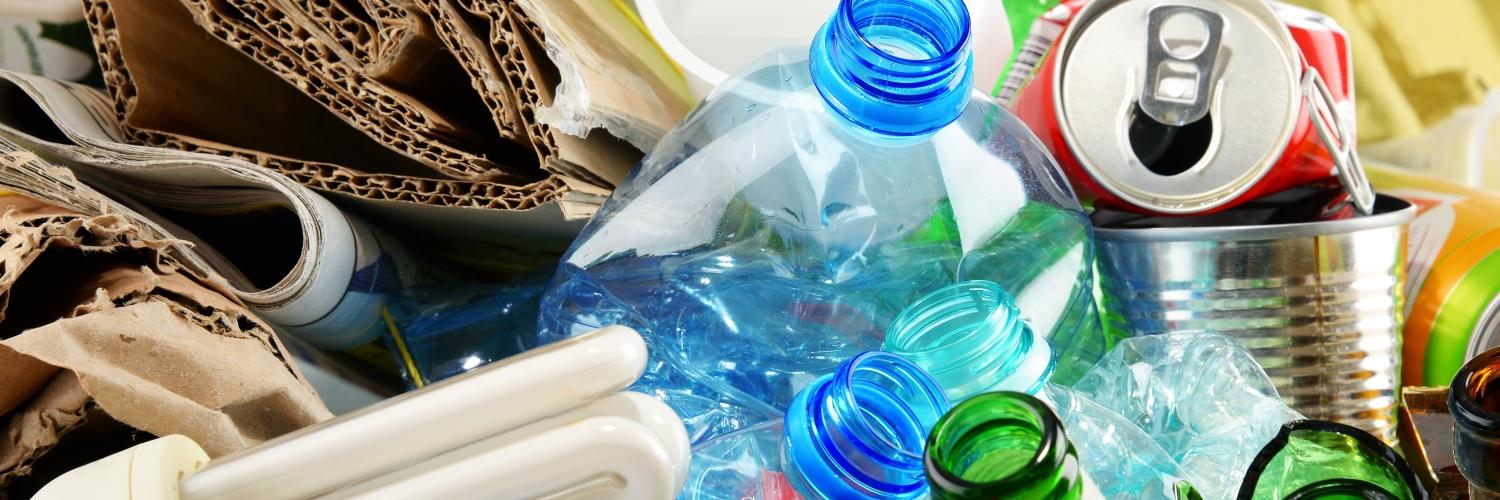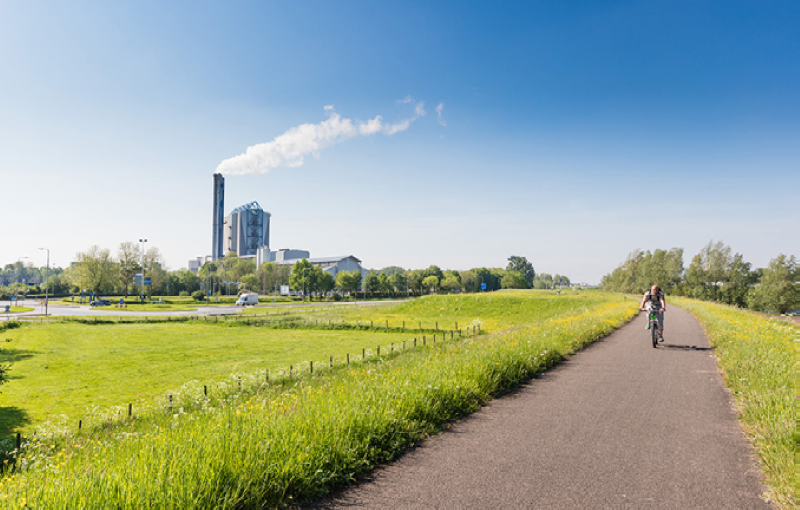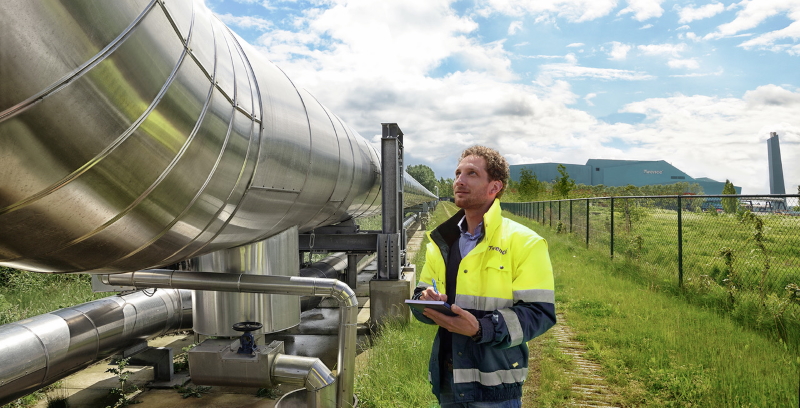
News
7 June 2021
Waste-to-energy missing in EU Taxonomy
EU tells financiers which activities are sustainable
A cloud of uncertainty hangs over the waste industry. There is a risk that waste-to-energy (WtE) plants will not be classified as sustainable in the EU Taxonomy Regulation. The consequences for these plants would be higher interest charges and reduced access to investors – despite the fact that incineration with energy recovery plays an important part in the transition towards a circular economy.
Sustainable investors can hardly see the wood for the trees. The new EU Taxonomy Regulation should provide clarity on which activities are ‘sustainable’. This binding regulation, which is applicable across the whole of the European Union, classifies economic activities according to their sustainability. Waste prevention and recycling are labelled ‘sustainable’, but not thermal waste treatment with energy recovery. This means that waste-to-energy (WtE) plants will not have access to green and sustainable capital and will be marginalised in related EU legislation.

In 2030 the thermal treatment of European waste will avoid 120 Mt of carbon emissions each year
Residual waste is here to stay
The waste industry, which supports the regulation in principle, is not giving up that easily. Recycling and thermal treatment are two sides of the same coin, say industry spokespersons. They argue for an integrated approach to ensure the aim of creating a circular economy is not put at risk. The key argument is that some residual waste will always leak from the materials loop, however good collection, separation, sorting and recycling are. ‘We are squarely behind the Taxonomy Regulation as an instrument. Many materials and substances can be recovered from discarded products, but a residual waste fraction will always be left over at the end. Thermal treatment with energy recovery is a much better option for this waste stream than landfill,’ says Andreas Krawczik, director of Remondis Nederland and DWMA board member for European Affairs.
Legacy of the past
Krawczik mentions another argument for not rashly denying the WtE plants access to investment: the ‘legacy of the past’. ‘We are concerned about products that came onto the market ten to twenty years ago and are now entering the waste phase of their life cycle. All those products were designed and produced when the Taxonomy Regulation did not exist. The European Commission has its eyes set on the future and the circular economy, but fails to see the wave of old products that is about to engulf us.’ A striking example, he says, are the brominated flame retardants in televisions that were made about twenty years ago. ‘Those are hazardous substances that must be kept out of recycled plastics for use in things like settees or parking bollards. They have to be extracted from the materials chain and sent for incineration.’
Transparency about sustainable activities
The new EU regulation contains delegated acts for publishing financial information. From now on, businesses will have to declare which activities are sustainable and which are not. This puts those with old plant and equipment at a disadvantage. ‘The past will continue to plague companies as long as these capital assets are operational, even if they are frontrunners in their field.’ says Valérie Plainemaison, director of FEAD. ‘The big winners will be new businesses with all new equipment. This is fine in itself, because they drive the market forward, but it is mainly Western European companies that will benefit. Eastern Europe will remain saddled with outdated plant.’
High quality recycling means a bigger residual waste fraction
‘It is an illusion to think that everything can be recycled,’ agrees Valérie Plainemaison, director of the European Federation of Waste Management and Environmental Services (FEAD), of which the DWMA is a member. The EU’s goal for 2030 is to recycle 65% of all municipal waste. ‘That leaves a 35% residual fraction,’ she says. ‘It is naïve to think that ecodesign can significantly reduce this fraction. We’re doing our best, but the opposite is the more likely outcome: raising the quality of recycling will lead to a bigger residual fraction. Besides, waste volumes reflect the level of economic prosperity and consumption.’
Higher greenhouse gas emissions
Together with eight European trade federations, FEAD is working hard to get the WtE plants included in the Taxonomy Regulation. ‘If we don’t succeed, it will be difficult to attract investment for new WtE plants and more European waste will be landfilled, which would mean a big increase in greenhouse gas emissions. And it would be bad for the modernisation of the waste industry. Waste management is a chain of activities in which the incineration of residual wastes is a necessary final step,’ says Plainemaison.
Valérie Plainemaison (FEAD):
‘The Taxonomy Regulation makes it more difficult to invest in and modernise the waste industry.’
Last chance before the summer
This summer is probably the last chance to get the WtE plants into the Taxonomy Regulation. The Commission will then come to a final decision on the delegated acts with technical details that fall under the regulation, which itself is about the circular economy. Plainemaison: ‘Otherwise the road to “green investment capital” will be blocked for WtE plants, more residual waste will be landfilled, especially in Eastern Europe, and the issue of residual waste will continue to present a major problem.’
Avoided emissions
Large volumes of residual waste are still being landfilled in Europe, at a rate of no less than 175 million tonnes per year. Landfill leads to large emissions of methane, which is a much stronger greenhouse gas than carbon dioxide. It is more sustainable to incinerate residual waste and recover the energy in the form of heat and electricity, which delivers what is called ‘avoided greenhouse gas emissions’. ‘It has been shown that in 2030 incinerated European waste will avoid 120 megatonnes of CO2 emissions each year [taking account of a shift from landfill to thermal treatment of residual waste and energy generation by WtE plants – Ed.]. That is as much CO2 as Belgium’s annual emissions,’ says Plainemaison. To her consternation, the European Commission ignores avoided emissions and counts only the ‘end of stack’ emissions from WtE plants.

Andreas Krawczik (Remondis Nederland):
‘It is better to incinerate the residual fraction with energy recovery than to landfill it.’
European waste hierarchy
Plainemaison supports a carefully considered policy of waste incineration. ‘We are certainly not in favour of incinerating waste “just like that”. Incineration must be based on the European waste hierarchy. Countries should have waste management plans in place and recycle their waste as much and as well as possible. As far as FEAD is concerned, only WtE plants with R1 status should get a licence.’ To obtain R1 status WtE plants must achieve high energy efficiency. Once they are awarded R1 status they move a step up the waste hierarchy, from disposal to recovery.
Problem for recycling
If it was up to Krawczik, the phasing out of old WtE plants should be up for discussion. ‘It’s possible, but must be carefully planned. At the same time, the landfilling of recyclable and combustible waste must be stopped immediately. Recyclers should be able to dispose of their residual streams at any time. If this cannot be guaranteed, our recycling companies will find it very hard to continue operating. Looked at this way, thermal treatment with energy recovery of non-recyclable material is indeed sustainable.’
Wider scope
The Taxonomy Regulation will have a big impact and is expected to extend beyond the immediate goal of channelling green and sustainable funds into sustainable investments. ‘The regulation will also be a factor when applying for European subsidies or acquiring public contracts,’ anticipates Plainemaison. ‘If an activity is not included in the Taxonomy, the waste company will not be eligible. I can already see it going in that direction. In effect, it would be a double punishment.’
Author
Han van de Wiel - @copyright
Translation
Derek Middleton
